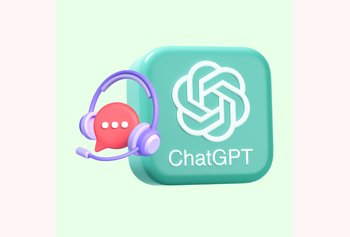Ways to Transform Your Customer Support from a Cost Center to Profit Center

Table of contents
Customer support can make money for your business.
I heard this on a podcast, and I couldn’t agree more.
Regrettably, not all companies share this perspective.
Many view customer support as a cost center, a department that is needed only when things go wrong. They hire inefficient agents and rely on outdated and expensive software.
However, the truth remains: if you invest in building an effective support team and providing them with the right tools, you can:
- Unlock revenue-generating opportunities
- Elevate the Lifetime Value per Client (LTV)
- Nurture customers into becoming brand evangelists
In this article, we will guide you through four highly effective methods to transform your customer support department from a cost centre to a revenue generator.
Table of Contents
4 Key Drivers to Transform Your Support Department
1. Set an omnichannel support mechanism
Companies that offer omnichannel support retain almost 89% of their customers, leading to increased profits.
Think about it: In the past, customers mainly interacted with companies through traditional means like visiting a physical store or calling a customer service hotline.
But now, customers have many more options. They interact with brands across social, mobile apps, live chat, and more channels.
See, when you make things convenient for the customer, on different channels, they’ll keep coming back. Having multi-channel support and communication is, therefore, helpful in so many ways:
- Reduced Effort: With omnichannel support, customers can reach out to your team effortlessly. Whether they choose to call, email, or use live chat, they don’t have to go through multiple steps or platforms to get assistance.
- Seamless Journey: Omnichannel support ensures a smooth customer experience across different touchpoints. For example, a customer can start a conversation on live chat and continue it later via email or phone.
- Accessibility and Availability: By being present on multiple channels, you provide accessible support anytime, anywhere. This is particularly valuable for customers in different time zones.
2. Drive support efficiency through smart automations
Customer service automation can help businesses grow revenues between 4% and 8% above their market.
Let me ask you something:
- Does your support team handle a large volume of tickets on a daily basis?
- Do you spend a lot of time figuring out who needs to work on what ticket?
If your answer is YES to either or both of them, then it’s time to start leveraging automations.
Automating support processes ensure that your support team do as less grunt work as possible. This has the potential to contribute to higher revenue as they can dedicate their time and effort to handling complex business operations.
Businesses can strategically implement automation in different support areas, such as:
- Ticket Routing and Triage: Intelligently routing support tickets to the most suitable team or agent based on predefined criteria expedites response times and ensures efficient handling of inquiries.
- Chatbots and Virtual Agents: Using chatbots or virtual agents to handle common customer questions can help save time and effort for your support team. These automated systems can quickly respond to inquiries, address frequently asked questions, provide basic troubleshooting, and even offer personalized recommendations.
- Social Media Listening and Automation: Many customers turn to social media to express their opinions, seek support, or share experiences. By utilizing social media listening tools, support teams can monitor these conversations and identify opportunities to engage with customers in real time.
Recommended Reads:
– Ultimate Customer Support Guide
– Exclusive Survey: State of Customer Support in 2024
– Customer Support vs Customer Service
3. Train support staff to bring in extra revenue for your business
Even after a mistake, around 78% customers will stay loyal with a company, if they receive friendly customer service at all times.
When customers come to your support staff for help, how you deal with them will decide their loyalty towards your brand.
Can your agents handle angry customers? Can they turn around a negative experience and make it a positive one?
You see, investing in support agent training is crucial for handling customers and ultimately generating revenue. Emphasize the importance of handling issues tactfully. Help them adopt a problem-solving approach and work collaboratively with the customer.
Here are some tips and best practices to adopt:
- Emphasize Empathy: Teach your support staff the importance of empathizing with customers. Encourage them to understand and acknowledge the emotions customers may be experiencing. For example, when a customer expresses frustration about a delayed delivery, an empathetic response could be, “I understand how frustrating it can be when you’re eagerly waiting for your package to arrive. Your delivery is scheduled for tomorrow.”
- Promote Active Listening: Train your agents to actively listen to customer complaints and queries. This involves giving their undivided attention to the customer and not interrupting when they’re speaking.
- Handling Angry Customers: Train support staff to handle angry customers. Teach them techniques such as maintaining composure, refraining from taking the customer’s anger personally, and responding with empathy. For instance, if a customer is upset about a billing error, an agent could respond by saying, “I understand how frustrating it is to receive an incorrect bill. Let me investigate this issue for you and work towards a resolution.”
- Turning Negative Experiences into Positive Ones: Encourage agents to go the extra mile to satisfy customers and exceed their expectations. For example, if a customer had a negative experience with a faulty product, an agent could offer a discount on a future purchase or provide additional assistance to regain the customer’s trust.
4. Prioritize customer feedback to boost retention and new business
Existing customers have a 60-70% higher chance of purchasing from your brand – due to familiarity and positive brand experiences.
An effective way to drive revenue is to meet customer needs. But, how do you know what customers want? How do you get to understand their likes and dislikes?
Customer feedback.
Listening to your customers, collecting feedback, and providing them with the products/services they need has a direct (positive) impact on your bottomline.
When collecting feedback, here are some things you need to keep in mind:
- Frequency of surveys: Conducting surveys too frequently may result in survey fatigue and reduced response rates. On the other hand, conducting surveys too infrequently may lead to outdated or insufficient data. Consider the nature of your business and the profile of your customers to decide the appropriate time to collect feedback.
- Length of surveys: Long, time-consuming surveys may deter customers from participating or lead to rushed and less thoughtful responses. Aim for concise and focused surveys that address specific areas of interest or concern.
- Metrics to track: Clearly define the metrics and objectives you want to track through the surveys. This could include NPS, CSAT, CES, among others. By identifying the key metrics, you can tailor your survey questions accordingly, allowing you to gather actionable data.
Additionally, when collecting customer feedback:
- Use a variety of channels: Employ multiple channels to collect feedback, such as online surveys, in-person interviews, focus groups, social media, or customer support interactions.
- Offer incentives: Consider providing incentives, such as discounts, exclusive offers, or entries into sweepstakes, to encourage participation and express gratitude for customers’ time and input.
- Analyze and act on feedback: Thoroughly analyze the data to identify trends, patterns, and common themes. Use the insights gained to inform product/service enhancements, and address customer pain points.
- Communicate changes based on feedback: Let customers know that their feedback has been heard and acted upon. Communicate the changes or improvements you have made as a result of their input.
Bonus Tip:
If you’re looking to ramp up your support efforts to leverage revenue generation, then you must invest in the right tool. There are a few tools available today to help businesses streamline their support efforts – such as Hiver, Help Scout, Freshdesk, and Zendesk. Each tool comes with its benefits and complexities.
A customer support software that brings you ROI
When you’re investing in a customer support tool, you must analyze a few key areas:
- Does the tool come with hassle-free setup and installation?
- Are there any hidden costs (such as training and setup costs) involved?
- Does the tool offer essential customer support features?
- Most importantly, is the tool affordable?
With Hiver, you get a platform that’s extremely easy to setup and start using – since it works right inside Gmail. There’s no learning curve, literally!
Also, when we compared Hiver’s pricing to other popular support tools, such as Help Scout, Front, Kayako, and more, we found out that Hiver is 30-50% cheaper.
“If your organization uses Google Workspace, do consider Hiver before you implement a more complex software like Zendesk which requires you to learn a new interface. Hiver has been one of the best decisions we made. In our estimate, Hiver turned ROI positive for us within the first three months.” – George M, Managing Partner, FutureBooks

































